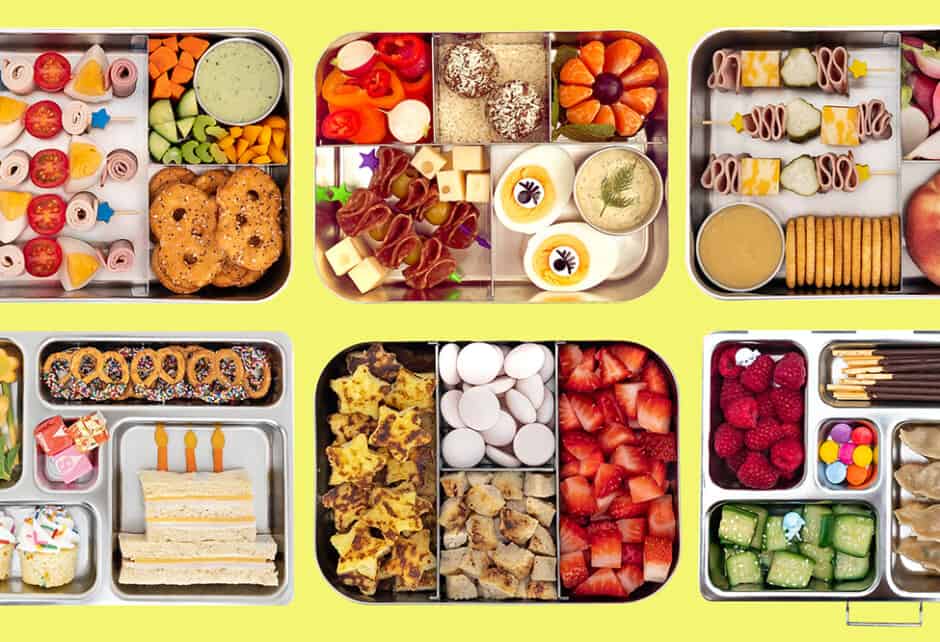
10 Tips To Get Your Kids To Eat More Fruits & Veggies
Written by Sarah Waldman
Photography by Photographed by Sarah Waldman
Got picky eaters at your dinner table? We know just how real the struggle is! Most parents deal with some sort of hesitation from our kids towards food, that’s why we’ve tapped Sarah Waldman, author of Little Bites–100 Healthy, Kid-Friendly Snacks and her upcoming second book Feeding a Family–A Year of Simple and Healthy Family Dinners to dish up ten tips on how to successfully get your kids eating more of the good stuff!
Ah yes, the classic parenting fruit-and-vegetable-challenge. As parents, we all know the frustration that comes with feeding little people—the unique temperaments, confusing dislikes (but, you liked it yesterday!), and overwhelming pressure from the modern food marketing system telling us that kids are not made to like fruits and vegetables, they are made to like packaged snacks and plain pasta. This is simply not true. Children are perfectly capable of exploring, eating, and enjoying a wide range of fruits and veggies, but it can take a lot of hard work to get theses foods into your child’s belly.
We completely understand why and how pickiness around certain foods is formed because we, as busy parents, ease up on the expectations of our children’s eating habits. At the start, however, most babies are enthusiastic eaters, showing an open relationship with food. As kids grow up, behaviors, personalities, and opinions are thrown into the mix and things tend to get complicated. It’s possible, as parents, to be both sensitive to our children’s likes and dislikes without catering to every request. The food your family cooks and serves will become a fact of your child’s world, and they will soon adapt to mealtime like they do to everything else—it’s the period of adaption, which is bumpy.
Here are ten tips that helped us get more fruits and veggies into our kids’ diets. It is an ongoing, ever evolving struggle, but one we are sure we can take control of.
Call A Meeting- Start with a family meeting to discuss the start of this exciting project—shopping for, preparing, and eating more colorful fruits and vegetables together as a family. Maybe you mention the great things fruits and vegetables do for your body, invite the kids to pick out dinners for the week, or plant some tomatoes in the backyard. The goal here is to get everyone excited and not have it come as a surprise when things start to change.
Offer Choices- Rather than calling kids out for being “picky” with fruits and vegetables, arrange healthy choices on the dinner table (or lunch box or snack plate) and let everyone choose what they like. It’s okay if someone only chooses one food, but there should be at least one fruit or vegetable that you know everyone likes. If a child is told they are “picky” they may start to believe they not capable of enjoying a variety of foods and thus, reinforce their pickiness.
Include Familiar Foods- Avoid fruit and vegetable heavy dishes made up of all new ingredients. Children like to see something familiar. If your kids really love pasta or smoothies, use those foods as a base then add in new foods (example: pasta with peas or a strawberry-banana smoothie with spinach).
Avoid Comparisons- Stop yourself from comparing your kids to each other. If you say something like “See, your brother is eating broccoli” your child can hear “he is better than me”, which can make children feel defensive and angry.
Zip Your Lips- As tempting as it may be, avoid praise and feedback at mealtime. Hearing something like “Take 3 more bites of squash then you can leave the table.” or “Good job eating all of your sweet potatoes.” translates to “Mom and Dad tell me when I am done eating, not my body.”.
Come Hungry- The kitchen is closed after dinner and between specific snack and meal times. If kids come to the table hungry they are much more likely to dig into the fruits and vegetables offered. And if they know the kitchen is closed after dinner, they’re more apt to try what’s on their plate.
What’s On Your Plate and In the Fridge?- Take care in what you (and other role models) eat. Children are always observing you and are very influenced by your choices. Think about your relationship with vegetables. Do you cook, serve, and eat a lot of them? What about other family members? If fruits and vegetables are not bought, prepared, and served, they obviously can’t be eaten. Aim to always have a bowl of fruit on the counter, an easy to access drawer of veggie sticks and fruit slices in the fridge, and offer these fresh foods with every meal.
Keep Perspective- It’s easy to get hung up when your child wants to eat the same sweet fruits (like bananas) for every meal. You may think that something went wrong here and that your child may never want to eat foods without a side of something sweet included. Realize that if your biggest feeding problem is that your baby really likes bananas, then you have it pretty good. And, you’ll see just how quickly he or she will outgrow the banana phase.
Call It Like It Is- Don’t try to hide fruits and vegetables in a recipe. Hiding healthy foods makes children distrustful and suspicious. Wouldn’t you rather have your kids know what broccoli looks and tastes like as opposed to covering them up in pancakes and brownies? Instead, try serving the broccoli in a favorite food like soup, chicken stir-fry, or fritters. This is one way to open them up to new foods in a familiar way.
No Rewards- Dessert is not a reward for eating healthy foods. If presented this way, fruits and veggies become the foods to “get through” to reach that prized sweet. Sugar-filled rewards help reinforce the notion that the more unhealthy foods are better and more desirable than those precious fruits and vegetables.
Share this story




